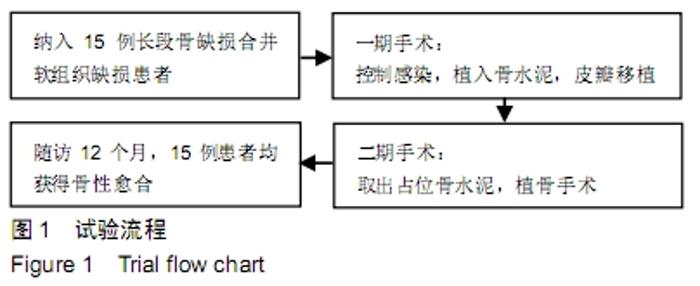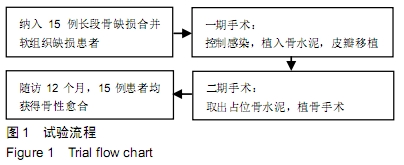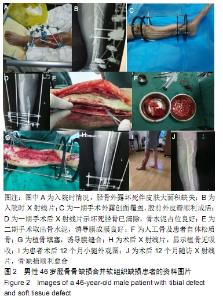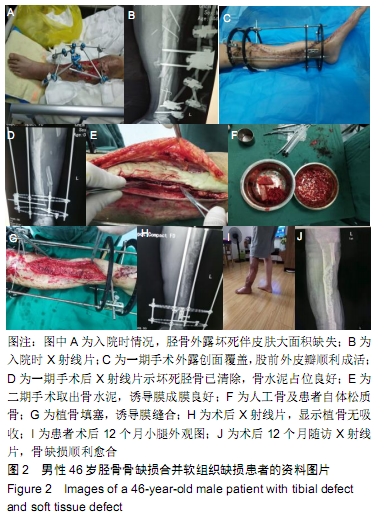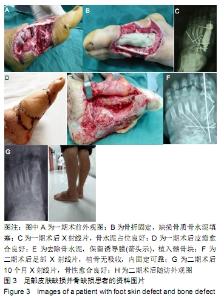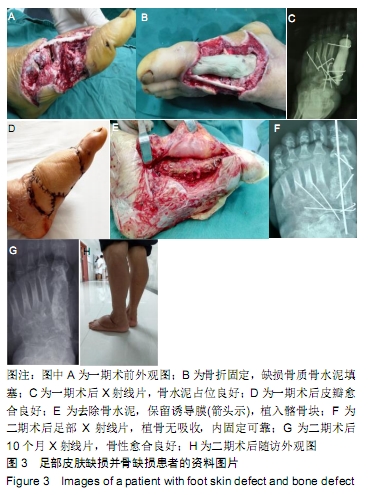[1] 王飞,李向东,魏广田,等.膜诱导技术治疗成人股骨远端开放骨折合并骨缺损早期疗效分析[J].临床军医杂志,2018,46(1): 106-109.
[2] 殷渠东,顾三军,芮永军,等.诱导膜技术治疗骨缺损的疗效分析[J].中华骨科杂志,2016,36(20):1284-1293.
[3] MASQUELET AC, OBERT L. La technique de la membrane induite pour les pertes de substance osseuse de la main et du poignet.Chir Main.2010;29(1):221-224.
[4] 丁强,孙楠,张炯,等.Masquelet诱导膜技术治疗感染性骨缺损的疗效观察[J].中国骨与关节损伤杂志,2017,32(7):775-776.
[5] LI Z, YU A, QI B, et al.Flow-Through Free Fibula Osteocutaneous Flap in Reconstruction of Tibial Bone, Soft Tissue, and Main Artery Segmental Defects.Ann Plast Surg. 2017;79(2):1-4.
[6] 向勇,王岩,刘会仁,等.游离股前外侧皮瓣联合胫骨骨滑移治疗小腿大段骨及皮肤软组织缺损[J].中华创伤杂志,2017,33(2): 129-133.
[7] YANG R, ZHOU M, XING C, et al.Repair of bone defect of the lateral forefoot by double segment triangular fibula flap with vascular pedicle: a case report.Saudi J Biol Sci. 2017;24(8): 1907-1910.
[8] 邱旭升,戚晓阳,殷志鹏,等.诱导膜技术治疗创伤性大段骨缺损的疗效分析[J].中华创伤骨科杂志, 2017,19(11):998-1002.
[9] 徐可林,王建兵,吴永伟,等.应用Masquelet技术治疗骨缺损[J].中华创伤骨科杂志,2017,19(1):35-40.
[10] WU H, SHEN J, YU X, et al.Two stage management of Cierny-Mader type IV chronic osteomyelitis of the long bones. Injury.2017;48(2):511-518.
[11] 顾志明,王金华,孙旭东,等.局部带蒂转移皮瓣结合外固定支架技术修复肢体软组织伴大段骨缺损[J].安徽医药,2017,21(3): 535-537.
[12] POBLOTH AM, SCHELL H, PETERSEN A, et al.Tubular open-porous β-TCP-PLCL scaffolds as guiding structure for segmental bone defect regeneration in a novel sheep model.J Tissue Eng Regen Med.2017;12(7):208-211.
[13] 郭永明,刘重,滕云升,等.Flow-through股前外侧皮瓣移植结合骨搬运技术治疗下肢节段性毁损伤[J].中华显微外科杂志,2018, 41(4):319-322.
[14] XU J, ZHONG WR, CHENG L, et al.The Combined Use of a Neurocutaneous Flap and the Ilizarov Technique for Reconstruction of Large Soft Tissue Defects and Bone Loss in the Tibia.Ann Plast Surg.2017;78(5):543-547.
[15] 邱旭升,陈一心,戚晓阳,等.诱导膜技术治疗感染性骨缺损的疗效分析[J].中国修复重建外科杂志,2017,14(9):46-50.
[16] 文根,蔡培华,柴益民.皮瓣移植联合Ilizarov技术一期修复下肢大面积复合组织缺损[J].中华显微外科杂志,2017,40(3):225-228.
|
